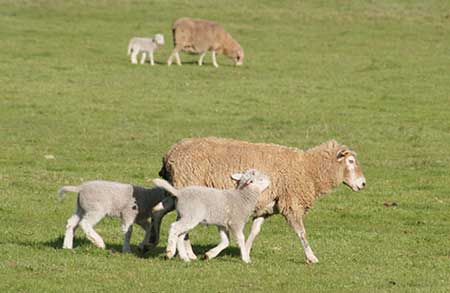Producers often state the main reasons for poor reproductive rates as being due to a combination of the poor season (and a lack of feed), cold weather and predation. In studies where extensive post-mortems have been carried out on dead lambs, the primary cause of lamb losses are normally due to dystocia, starvation, mismothering and exposure.
Foxes do account for some lamb deaths; however the majority have been shown to be already suffering from starvation, mismothering and exposure and would likely die anyway. The number of healthy lambs killed by foxes is quite low.
In more recent studies, post-mortems are going a step further and looking at the brain and spinal cord to see whether there are lesions present due to a lack of oxygen caused by a slow or complicated birth process. Lambs that have been oxygen deprived during the birth; have a poorer ability to regulate their body temperature and may be retarded, causing them to be slower to stand and suckle. In cold weather, they are more likely to die of exposure. If lambing conditions are mild, these lambs may live for a few days but still be unable to suckle, resulting in starvation and death. Another common cause of starvation is due to damaged or blind teats, or teats that are too big for a lamb to latch onto.
Ewes that have lambed and lost have a high repeatability of not rearing a lamb in the future and should be identified at lamb marking. Wet and drying
ewes and udder assessment can be done down the race at lamb marking, but this normally requires an extra labour unit, so plan ahead. Once identified,
ewes can either be run as dries (Merinos only) or culled.
Factors leading to increased lamb survival
For further detail contact your Livestock Consultant or veterinarian.
Tweet